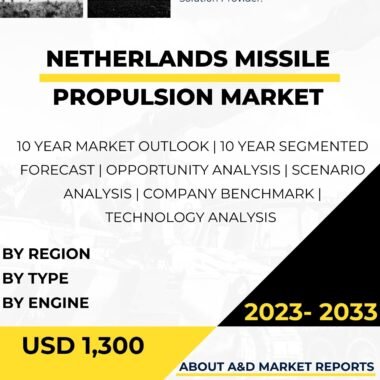Description
The South Korea missile propulsion market is a crucial component of the country’s defense industry, providing advanced propulsion systems and technologies to power a wide range of missiles and rockets. Missile propulsion plays a critical role in enhancing the performance and effectiveness of various missile systems, enabling them to achieve high speeds, long ranges, and precise maneuverability. South Korea’s focus on indigenous development, strategic partnerships, and technological innovation has positioned it as a significant player in the global missile propulsion market.
Missile propulsion systems are essential for providing the necessary thrust and energy to propel missiles and rockets through the atmosphere or space to their intended targets. The performance and capabilities of these propulsion systems directly impact a missile’s range, speed, maneuverability, and payload capacity.
Indigenous development has been a cornerstone of South Korea’s defense strategy, and the missile propulsion market is no exception. The country’s defense industry, represented by companies such as Hanwha Corporation and LIG Nex1, has made significant progress in developing advanced missile propulsion systems tailored to meet the specific requirements of the South Korean military.
One of the key indigenous missile propulsion systems in South Korea’s inventory is the “Hyunmoo” family of ballistic missiles. These missiles are powered by solid-fuel rocket motors, which offer numerous advantages, such as simplicity, quick response time, and reduced logistic requirements. The solid-fuel propulsion technology enhances the reliability and readiness of these missiles, making them important assets for South Korea’s defense capabilities.
Beyond domestic requirements, South Korea actively seeks strategic partnerships with international defense and technology companies to enhance its missile propulsion capabilities. Collaborations with global manufacturers facilitate technology transfer, joint research, and the integration of foreign propulsion systems into South Korea’s indigenous missile platforms. These partnerships contribute to the continuous improvement of South Korea’s missile propulsion technology and reinforce its position in the global defense market.
Moreover, South Korea’s commitment to innovation and research and development (R&D) has driven advancements in missile propulsion technology. The country invests in R&D programs to improve the performance, efficiency, and reliability of missile propulsion systems. Technological improvements focus on enhancing the thrust-to-weight ratio, fuel efficiency, and control mechanisms, allowing for more precise and maneuverable missiles.
As part of its broader defense industry, South Korea’s missile propulsion market extends beyond domestic needs. The country actively exports missile propulsion systems and related technologies to other nations, generating revenue and expanding its influence in the global defense market. Successful exports demonstrate the reliability and performance of South Korean-made missile propulsion solutions, contributing to the growth of its defense industry.
To ensure optimal utilization and proficiency in operating missile propulsion systems, South Korea places significant emphasis on training and skill development for its military personnel. Training programs focus on familiarizing operators with the operation, maintenance, and effective utilization of missile propulsion systems in various missile platforms.
Moreover, cybersecurity is a significant consideration in the missile propulsion market, as these systems often incorporate digital components and may be vulnerable to cyber threats. South Korea invests in robust cybersecurity measures to protect its defense infrastructure and ensure the safety and security of missile propulsion operations.
In conclusion, the South Korea missile propulsion market is a critical aspect of the country’s defense capabilities. Indigenous development, strategic partnerships, and innovation have allowed South Korea to create advanced missile propulsion systems that meet the specific needs of its military. From powering ballistic missiles with solid-fuel rocket motors to enhancing the range and maneuverability of various missile platforms, these propulsion systems provide South Korea with effective and reliable missile capabilities. As the defense industry continues to evolve, South Korea’s dedication to advancing its missile propulsion technology will remain essential in strengthening its national security and maintaining its position as a significant player in the global missile propulsion market.




